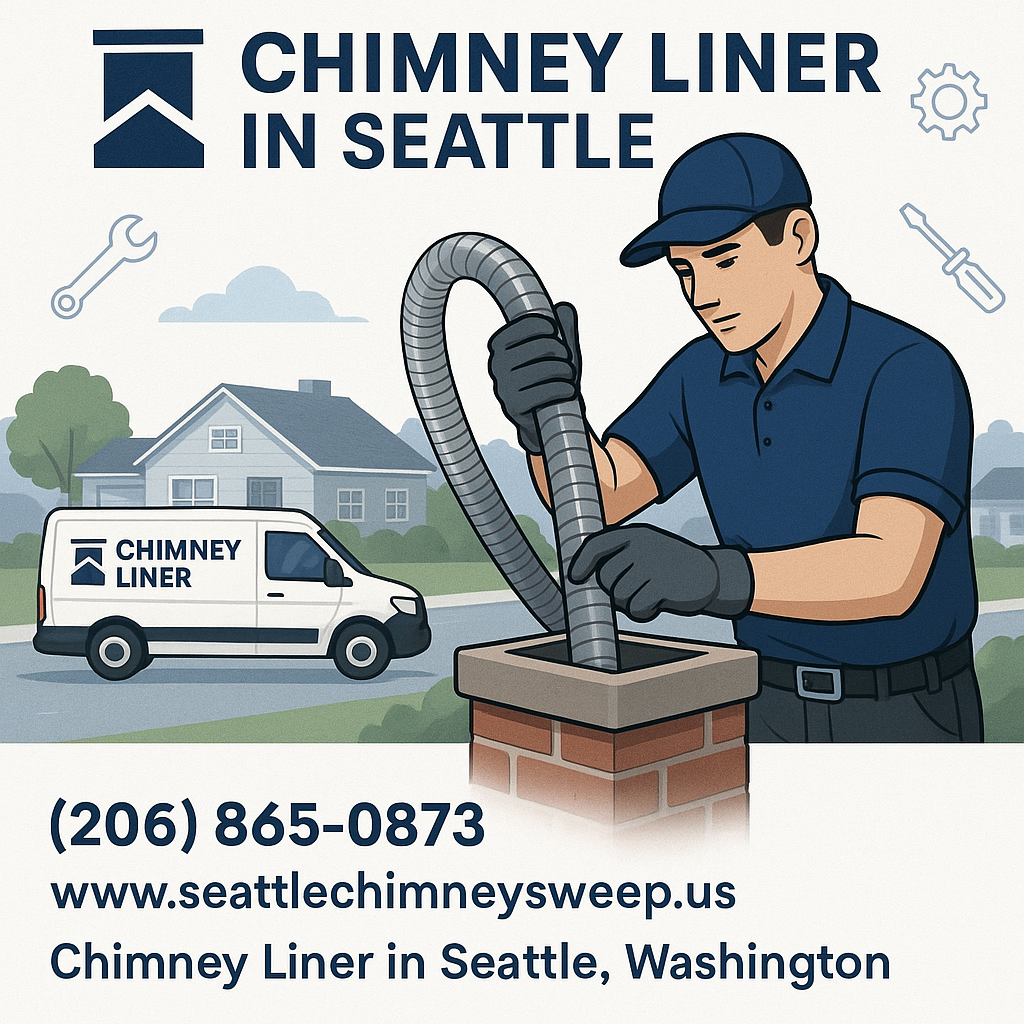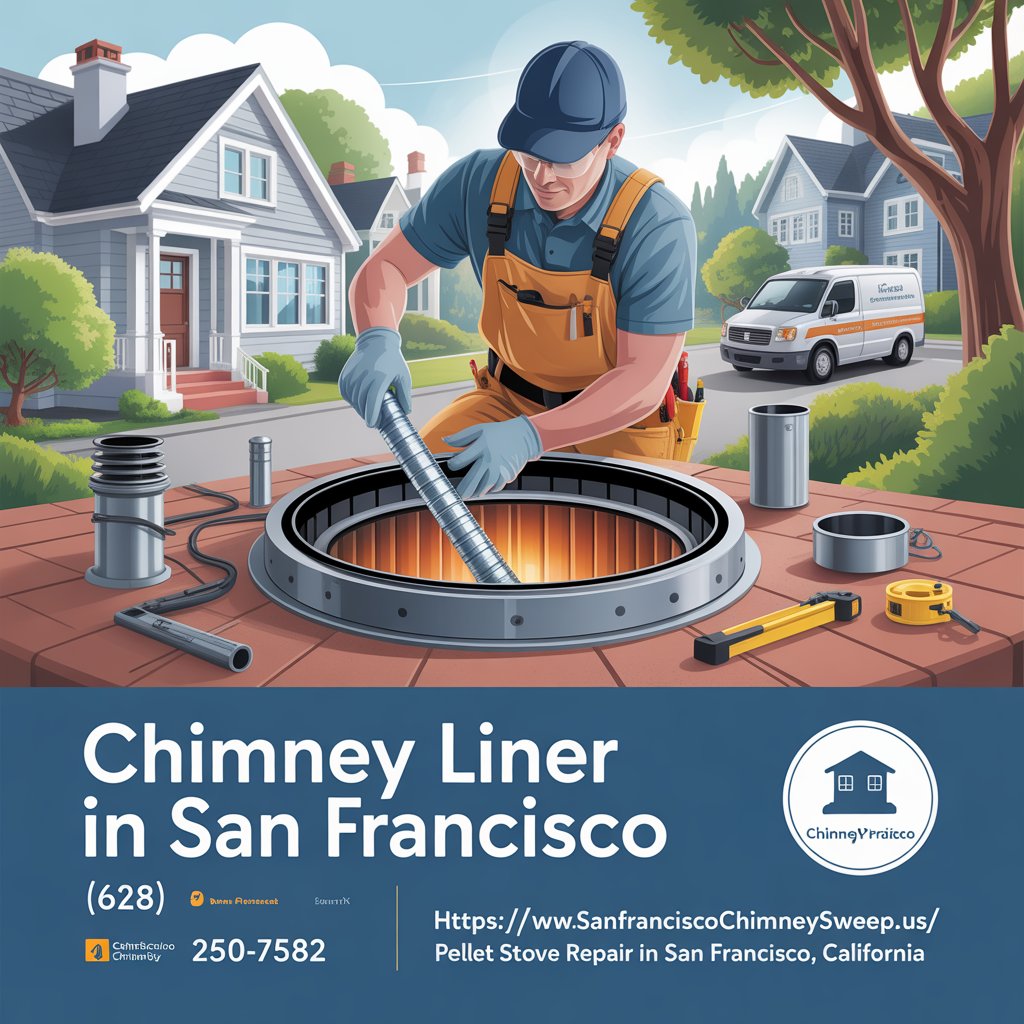When the first chilly breeze rolls in and you start thinking about lighting that cozy fire, it’s easy to focus on the fun stuff flames crackling, marshmallows toasting, and warm drinks in hand. But before you toss in that first log or flip the switch on your gas fireplace, it’s worth taking a closer look at what’s going on inside your chimney especially the part you can’t see: the chimney liner.Most homeowners don’t even know what a chimney liner is, let alone whether theirs is in good shape. But that little piece of the puzzle might be the one thing standing between a safe, warm winter… and a smoky, dangerous, or even fire-prone situation. And if you’re in the Pacific Northwest, where fireplaces get a lot of action in the damp, cold months, it’s especially important to stay on top of it. That’s where a professional check or replacement of your Chimney Liner in Seattle could make all the difference.
Let’s Start with the Basics: What Even Is a Chimney Liner?
Think of the chimney liner as your fireplace’s personal guide rail. Its job is to safely move heat, smoke, and gas from your fireplace or stove up through the chimney and out of your home. But it does more than just channel smoke.
Here’s what a chimney liner does:
- Keeps dangerous heat in check, so it doesn’t reach wooden framing in your walls.
- Blocks smoke and carbon monoxide from seeping into your home.
- Protects your chimney’s inner walls from acidic soot and moisture that wear them down over time.
There are three main types of liners: clay tile, stainless steel, and cast-in-place cement. Each has its pros and cons, but all of them are there for one purpose safety.
Cold Weather = Chimney Stress
Winter is when your chimney works the hardest and when it’s most vulnerable to problems. Cold air causes the chimney to contract. Mix in moisture (rain, snow, or even steam), and it’s the perfect setup for cracks, creosote buildup, and flue blockages.
If your liner is already damaged or outdated, it won’t be able to handle those shifts. Over time, it may:
- Crack or crumble
- Allow dangerous gases into your living space
- Lead to chimney fires due to excess creosote
And the worst part? You probably won’t know it’s happening until it’s too late.
How to Tell If Your Chimney Liner Needs Some Love
Not sure whether your liner’s doing its job? That’s pretty normal this isn’t exactly something you can check yourself with a flashlight and a ladder. But there are a few red flags to keep an eye out for.
Here’s a quick breakdown:
| What You Might Notice | What It Could Mean |
| Bits of tile or debris in the firebox | Your clay liner is breaking down |
| Excess smoke in the room | Liner may be cracked or blocked |
| Musty smells coming from fireplace | Creosote, moisture, or poor airflow in chimney |
| Discolored chimney exterior | Moisture damage possibly from liner issues |
| Fire struggles to stay lit | Improper draft due to liner damage or blockage |
If your fireplace just feels “off” this season, trust your gut it might be time for an inspection.
Why Replacing or Relining Now Can Save You Later
A chimney liner that’s cracked, corroded, or missing in sections isn’t something to put off. Not only is it a safety concern, but it can also impact your chimney’s lifespan, your home’s air quality, and your energy bills.
Here’s why replacing your liner before winter kicks into full gear is a smart move:
- Keeps your fires efficient – You’ll get better draft and less smoke.
- Stops damage before it spreads – Moisture and acids won’t eat away at your bricks.
- Makes your system compatible with upgrades – New liners are often required if you switch to a gas insert or wood stove.
- Protects your family – Fewer risks of carbon monoxide leaks or chimney fires.
A new liner might not be glamorous, but it’s one of those home investments that pays off in peace of mind and long-term savings.
“Out of Sight” Shouldn’t Mean “Out of Mind”
One local chimney technician once told me:
“People think if a chimney hasn’t fallen down, it’s fine. But the danger’s often inside, not outside.”
It really stuck with me. Chimneys are built tough but they’re not immune to time, weather, or neglect. Just because it’s standing doesn’t mean it’s safe.That’s why most experts recommend a chimney inspection once a year, especially if you use your fireplace regularly. And if it’s been longer than that? No shame just call someone before the deep freeze sets in.
Final Thoughts: Make Your Fireplace Your Friend Again
Winter should be about comfort, not concern. If you love your fireplace like I do, make sure it’s working the way it should from the firebox all the way up to the flue. The chimney liner is easy to forget about, but it’s one of the most important parts of your home’s heating safety.If it’s been a while since your last chimney inspection, or something just doesn’t feel quite right, take action now before the next cold front rolls through. And if you’re local, booking a professional to check or replace your Chimney Liner in Seattle might be the best thing you do for your home this season.
Read more:Chimney Sweep


